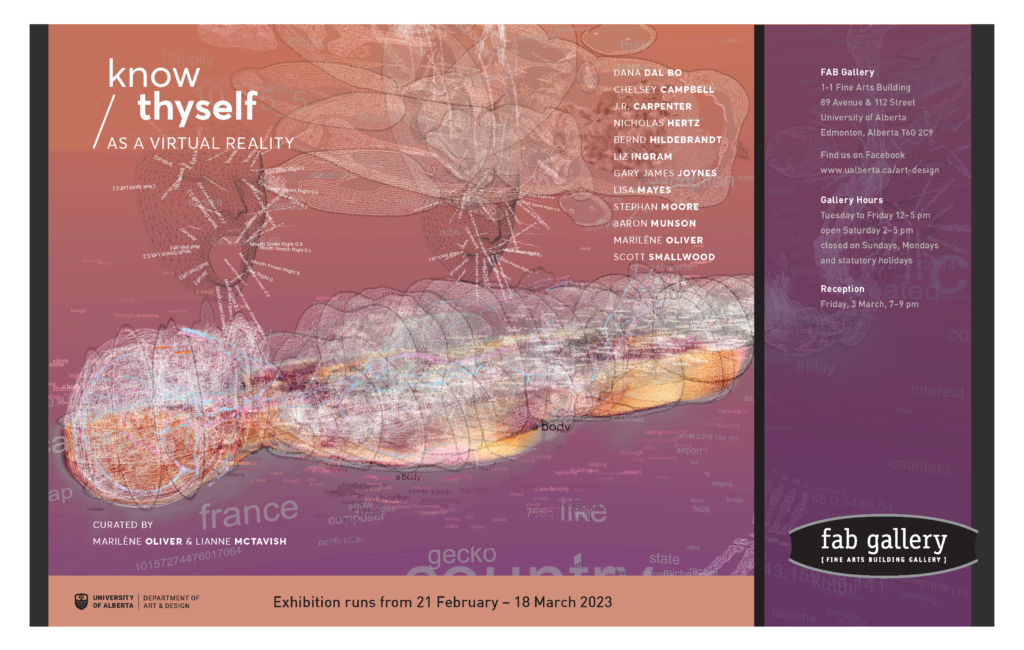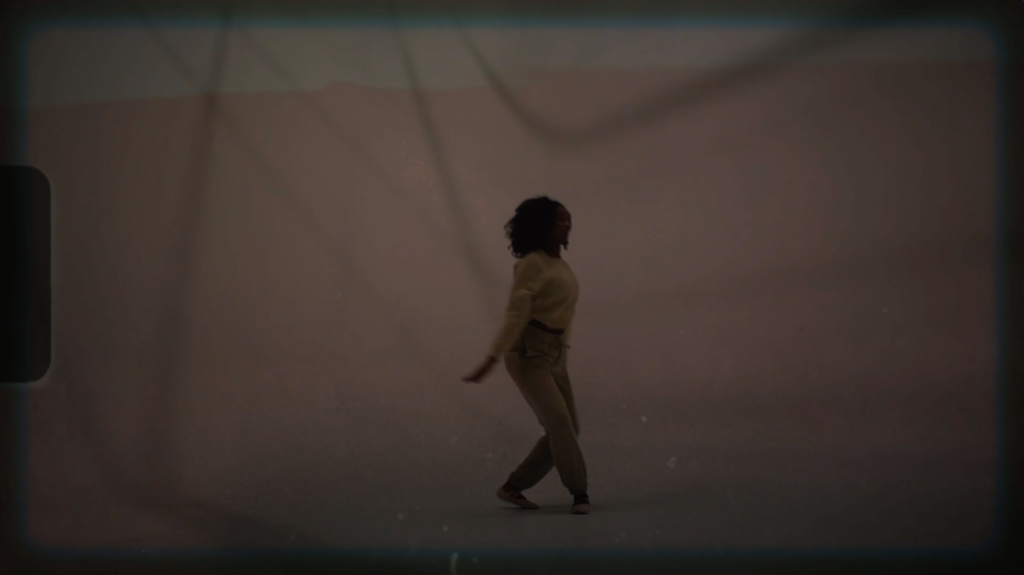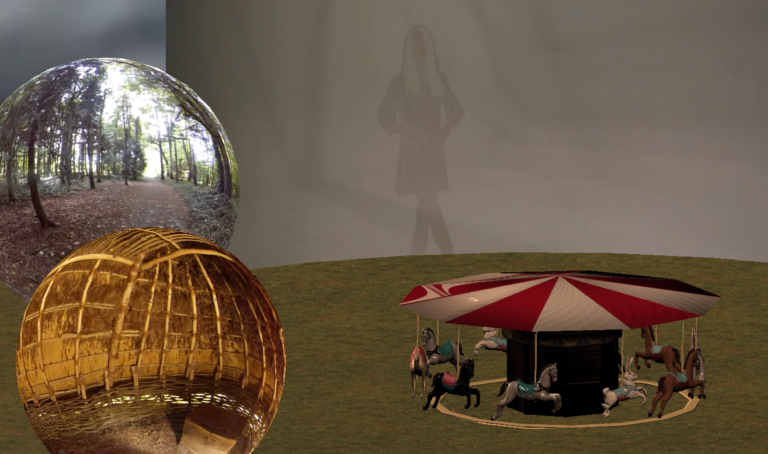
21st February- 18th March FAB Gallery, University of Alberta, Edmonton.
Know Thyself as a Virtual Reality is an interdisciplinary project that focuses on the ethics and aesthetics of the use of medical data and virtual reality.



Unity & programming development – Bhagyashree Zala, Gavin Gui
3D modeling assistant – Bhagyashree Zala
Excerpt about Ancestry & Me from Know Thyself as a Virtual Reality essay by Lianne McTavish
“Lisa Mayes also uses VR technology to re-place bodies within specific geographical locations. The artist submitted a saliva sample to 23andMe, an American corporation that specializes in genetics testing. The results provided Mayes with a quantitative breakdown of the geographical origins of her ancestors. This information largely confirmed the oral knowledge already conveyed to Mayes by her family members. A list of countries from Ireland to the United States related experiences of forced migration and diaspora in a rather distant manner. The artist undertook archival work and found parish records in order to narrow down the regions in each place more precisely, and strove to re-establish a physical connection with them. Mayes visited the southeast region of Ireland, for example, making a 360-degree video on an ancestral site that was also where a key battle was fought in 1798, during the Wexford Rebellion against English occupation. Mayes’ experience of this location felt more like remembering it than learning about it, for the knowledge of land can be embodied as a form of inheritance. “
“The VR artwork produced by Mayes and her collaborators allows participants to experience these places. Their visit begins on an old-fashioned carrousel modelled on the North American version from Coney Island, New York, which is populated by both domesticated and wild animal characters. This circular ride is appealing but also potentially nauseating; it allows the body to sense what might be a childhood memory. Yet this remembering is mixed with discomfort in a way that alludes to trauma, including the distress of forced migration. When visitors jump off the merry-go-round, they find themselves near four globes that contain 360-degree videos captured by Mayes on her pilgrimage to Ireland. Each quadrant also features screens that portray dancers. One Irish dancer performs traditional choreography, and one dancer is African American, alluding to another link in the cultural heritage of the artist. The sky above them is formed from an ultrasound scan of Mayes’ body. Her uterus creates a world that reinforces references to embodied origins and family connections while disclosing the close identification between body and land.”